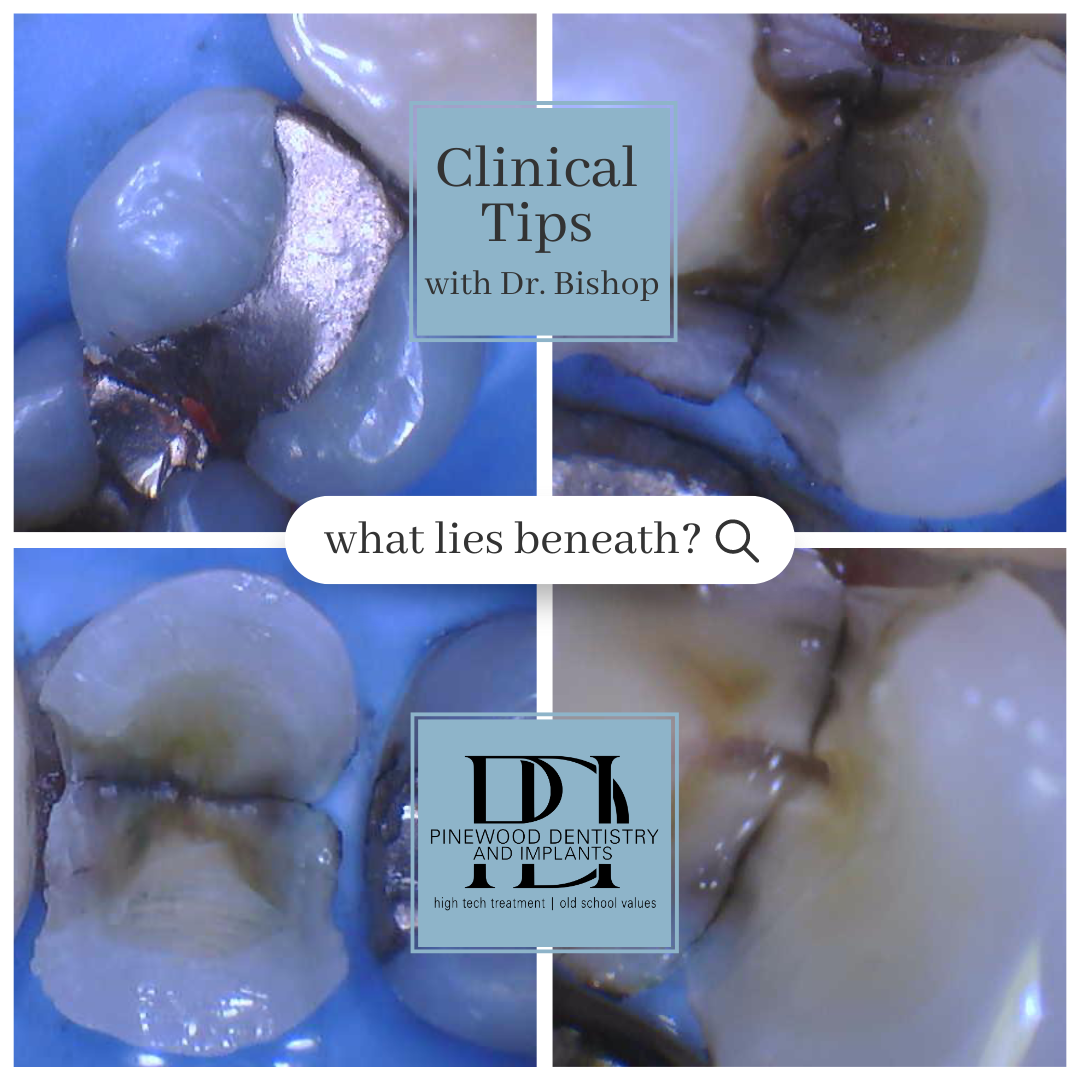Clinical Tips 1: What Lies Beneath
This patient presented with a normal X-ray, a normal tooth, with a normal silver filling on it. This silver filling has been in the tooth for decades, and our visual and radiographic exam shows nothing is wrong with it! But… if you tap on it, or if she bites on it, it hurts! Thats not good – we suspected the tooth was fractured.
Explaining fractured teeth to patients is such a tough topic! Cracked teeth can be as simple to fix as a filling (if the crack is only in enamel) or as complex as requiring an implant and almost a year without a tooth there!
In this case, we tried to be conservative. With a large MOD amalgam, and pain on biting, we treatment planned a core/crown to hold the tooth together suspecting we would find a fracture under the silver filling. Any fillings, including silver and white fillings, create a ‘wedge’ effect in the tooth. If that filling, or wedge, goes through the middle of the tooth, then every biting function on the filling attempts to wedge the tooth apart. Picture an axe being pushed into a tree trunk, same concept. In addition to that, if the bite force is on just the buccal or lingual cusp, then that bite force is trying to separate that portion of the tooth apart from the rest of the tooth.
We prescribe crowns or onlays for these situations because they distribute the biting force evenly through the entire root of the tooth, not just localizing it on one part or another, and work to hold the tooth together.
That is what we did here, attempted for a crown. We chased the decay in through the fracture, which went deeper into the tooth than just the enamel. The fracture line is a microscopic opening into the middle of the tooth, and the bacteria that causes tooth decay can get into the middle of the tooth. If they get too far, they can cause damage to the nerve, or pulpitis. That is what we saw here – the decay hit into the nerve, and we had to excavate out all of the infected tooth structure which involved ‘hitting the nerve’. That pulpitis is what we would classify as ‘irreversible’ or said another way – there is no way we would restore that tooth structure and get a normal pulpal response. The decay, which is bacterial and infectious, must be removed to get it to seal, and removing it all involved hitting the nerve or canal.

We used a band to build back up the sides, proceeded to prep the tooth for the crown, and did the root canal while the crown was being fabricated. All in a days work!! We will go through the process of restoring the tooth in another post.
